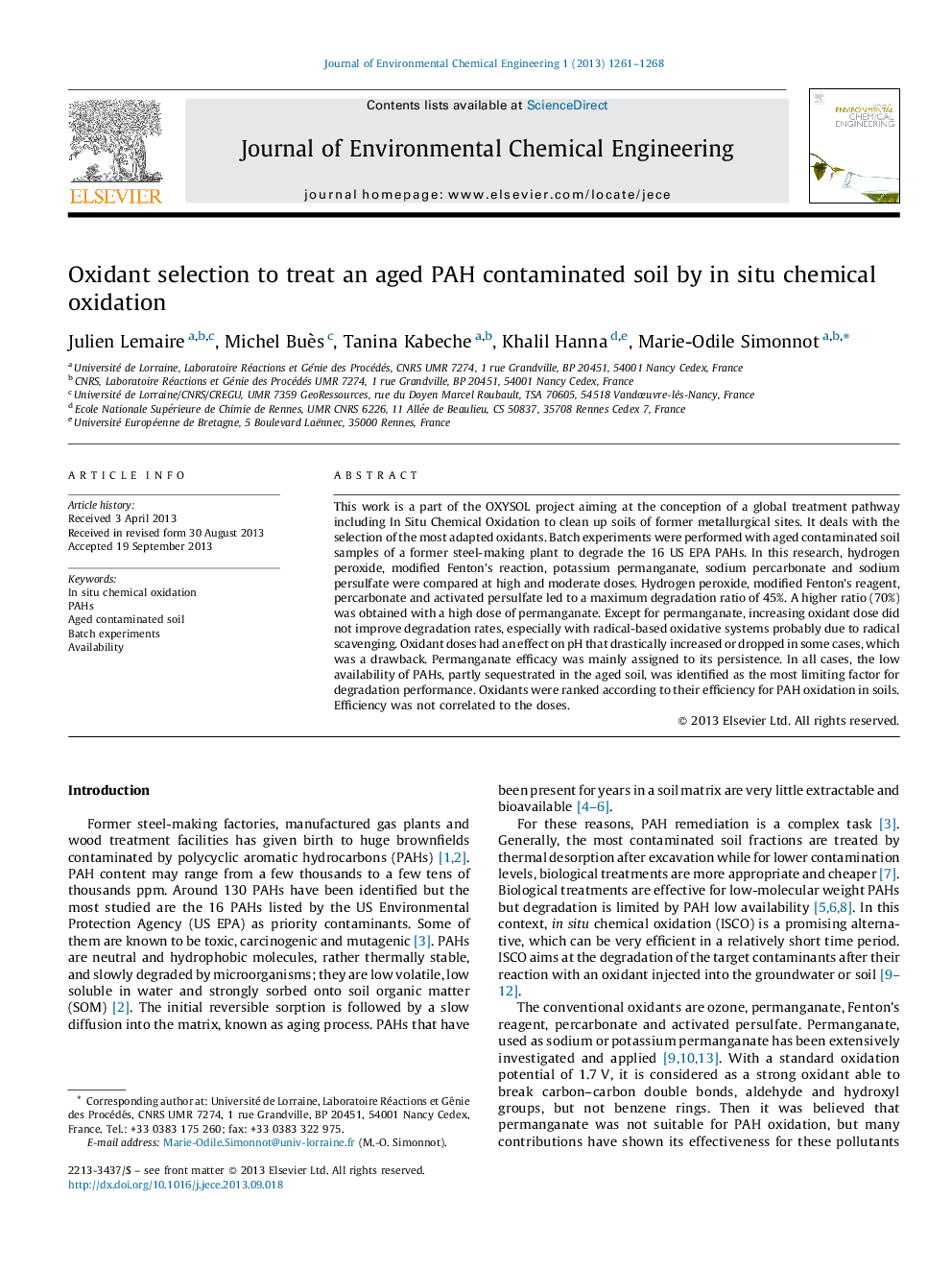| Article ID | Journal | Published Year | Pages | File Type |
|---|---|---|---|---|
| 222529 | Journal of Environmental Chemical Engineering | 2013 | 8 Pages |
•Batch experiments were run to select an oxidant to degrade PAHs in an aged soil.•Modified Fenton's reaction, permanganate, persulfate and percarbonate were tested.•Permanganate was the most efficient: up to 70% degradation.•Increasing oxidant dose may not enhance PAH degradation; other effects are involved.•PAH degradation was limited because of low PAH availability.
This work is a part of the OXYSOL project aiming at the conception of a global treatment pathway including In Situ Chemical Oxidation to clean up soils of former metallurgical sites. It deals with the selection of the most adapted oxidants. Batch experiments were performed with aged contaminated soil samples of a former steel-making plant to degrade the 16 US EPA PAHs. In this research, hydrogen peroxide, modified Fenton's reaction, potassium permanganate, sodium percarbonate and sodium persulfate were compared at high and moderate doses. Hydrogen peroxide, modified Fenton's reagent, percarbonate and activated persulfate led to a maximum degradation ratio of 45%. A higher ratio (70%) was obtained with a high dose of permanganate. Except for permanganate, increasing oxidant dose did not improve degradation rates, especially with radical-based oxidative systems probably due to radical scavenging. Oxidant doses had an effect on pH that drastically increased or dropped in some cases, which was a drawback. Permanganate efficacy was mainly assigned to its persistence. In all cases, the low availability of PAHs, partly sequestrated in the aged soil, was identified as the most limiting factor for degradation performance. Oxidants were ranked according to their efficiency for PAH oxidation in soils. Efficiency was not correlated to the doses.
